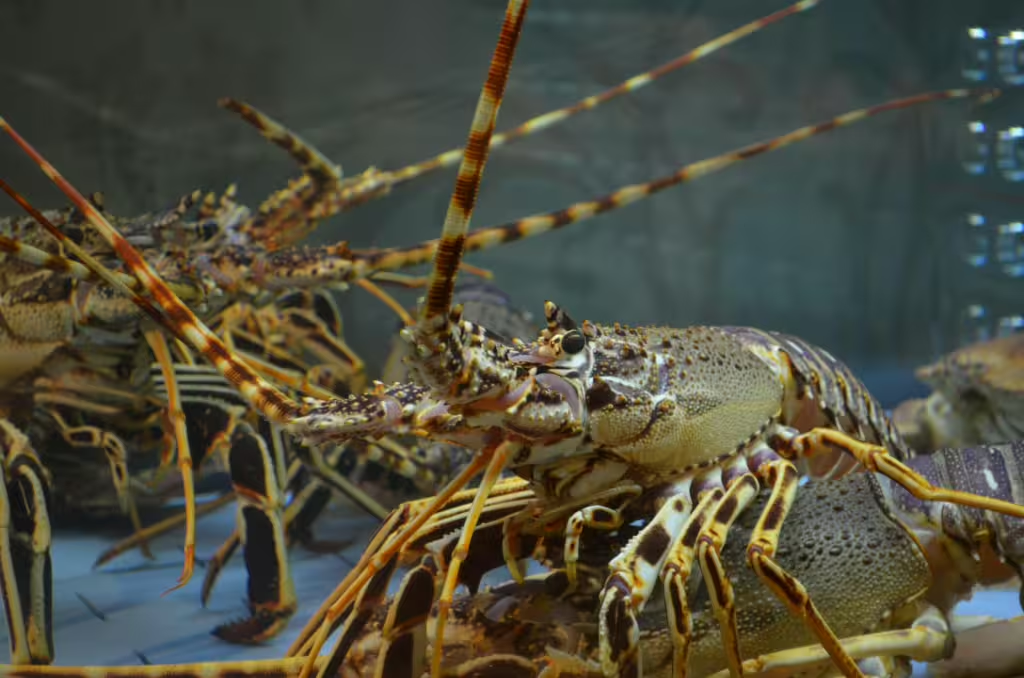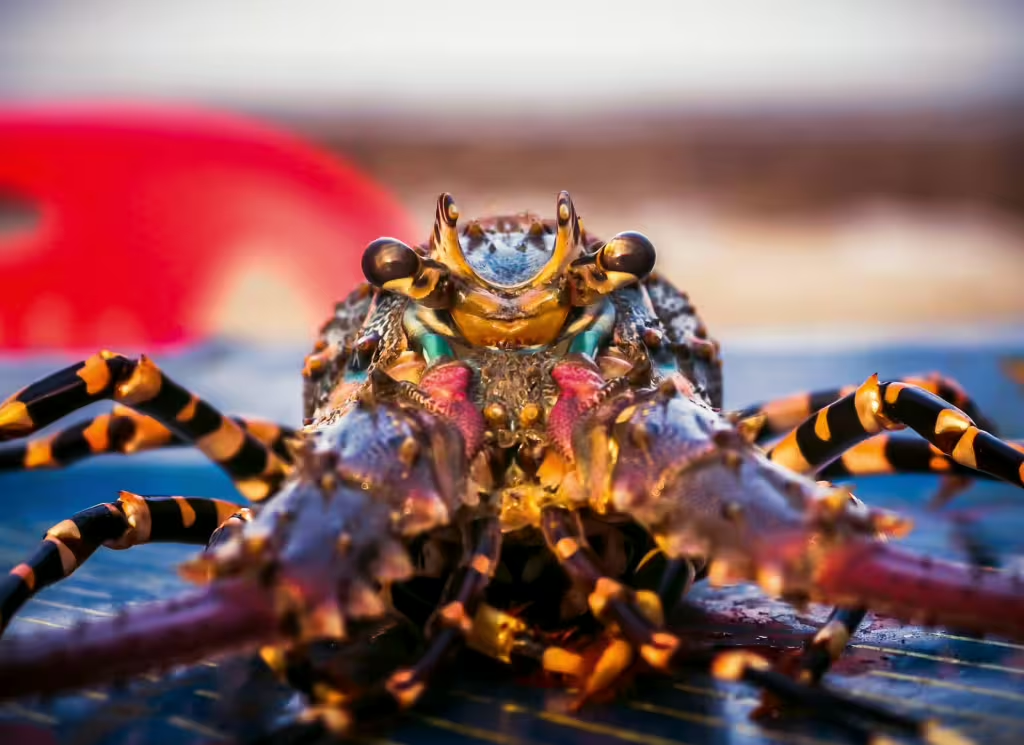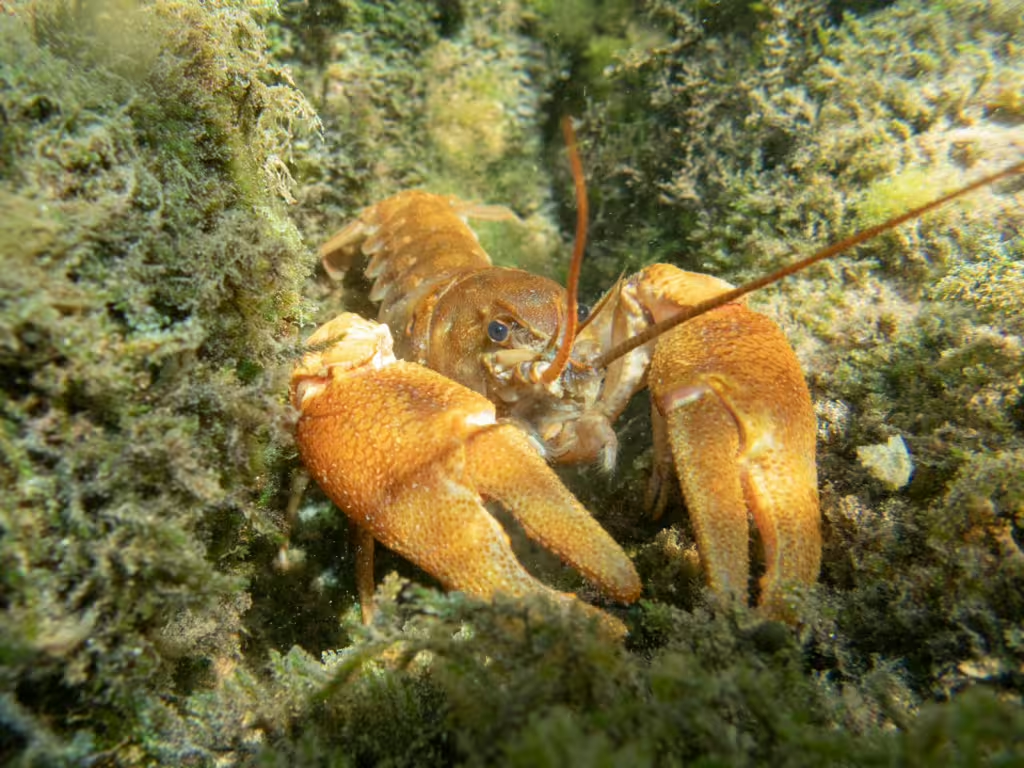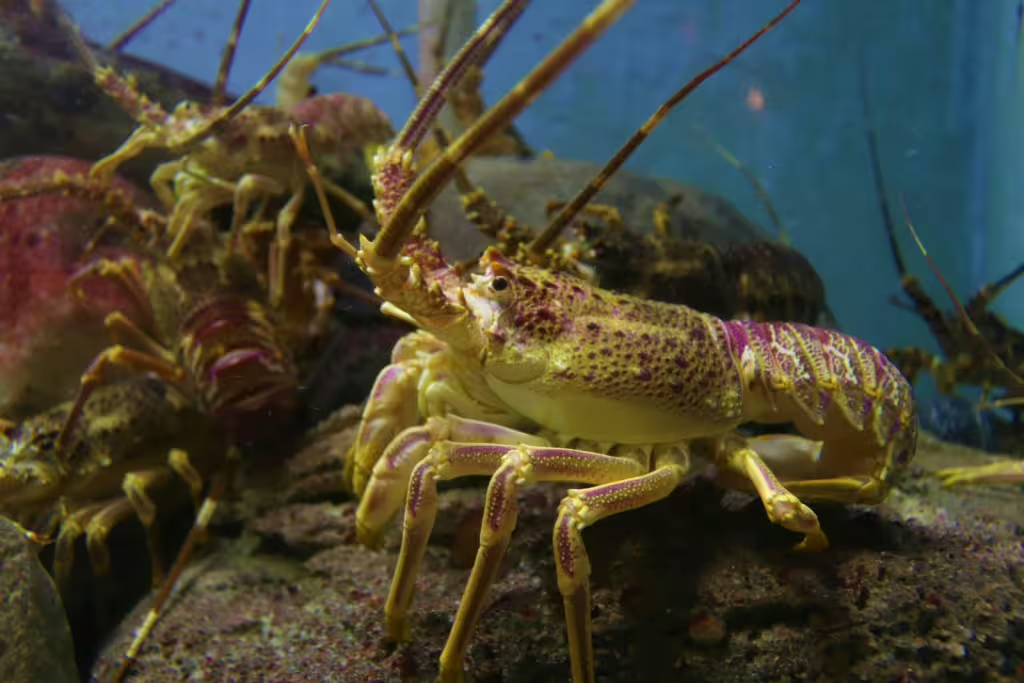Mudbugs, crawdads, langostines—no matter what you call them, a lobster or crayfish by any other name would still be a decapod. Most people picture these clawed crustaceans as an orange delicacy on a dinner plate or as a juicy, spicy, delicious treat cooked in a Cajun boil. And while these amazing arthropods are decidedly delicious, their value to their respective marine ecosystems lies in more than their culinary capacity. These animals have existed on this planet—in mostly the same form—since before the time of the dinosaurs. With such a rich evolutionary history, its hard to downplay their influence on the proliferation of life on this planet.
Like all crustaceans, lobsters and crayfish almost feel like they have always been here, exhibiting complex behaviors and offering complex flavors to creatures wherever they find themselves on the food web. Though these distinctly different species live in different environments, their similar morphology belies a common ancestry. In this article, we will explore those similarities as well as their differences. We will examine their biology, behavior, cultural significance, and the impending need for the continued conservation of these remarkable creatures. So pull up a bib and get ready to dig in to some real food for thought!

Crustacean Cousins
Lobsters and crayfish are close relatives as well as crustaceans. In fact, they are only truly separated by their respective habitats. To be more specific, lobsters are marine crustaceans. This means they live saltwater ecosystems, those found in the world’s oceans and seas. Though many can be found in cold or temperate waters, such as the North Atlantic, spiny lobsters do much better in warn, tropical seas.
Crayfish, on the other hand, inhabit freshwater environments like rivers, streams, and lakes. Though many might assume that they are found only North America, they also live in European, Australian, and Asian freshwater habitats.
As cousins, the two subspecies share certain hallmark features, namely: a hard exoskeleton, segmented bodies, jointed appendages, and the ability to molt as they grow. It is mostly in their adaptations that they differ, as fresh and water habitats hold different biological requirements, thus creating unique behaviors and unique ecological roles for both crayfish and lobsters.
Arthropodal Anatomy
As we mentioned earlier, a first glance at both animals reveals striking morphological similarities.
Body Plan
- Cephalothorax: The fused head and thorax region of the lobster and crayfish are covered by a protective shell, sometimes called a carapace. This is similar to other arthropods and decapods, including crabs, shrimp, spiders, and scorpions.
- Abdomen: Lobsters and crayfish both have segmented tail sections, which are both muscular and flexible, thereby enabling rapid backward swimming.
- Claws (chelae): Not every species has large, threatening claws, though this adaptation is fairly prominent in both lobster and crayfish. When claws are present, they are used for feeding, defense, and territorial disputes.
Exoskeleton and Molting
Both lobsters and crayfish have a rigid exoskeleton. Like insects, this exoskeleton is made of a material known as chitin. Chitin cannot expand, but it can be molted off (shedded periodically) in order for the animal to grow. In the days following their molting, all crustaceans are temporarily soft and vulnerable. It id during those times that they avoid conflict and hide from predators until their shell hardens back up. In terms of lifecycle, lobsters tend to be far more long-lived then their teensy cousins. Some lobsters have been known to live more than 50 years, molting dozens of times in that time. Meanwhile, crayfish typically only live between 2–5 years.
Sensory Adaptations
In terms of their sensory adaptations, both lobster and crayfish are possessed of sensitive antennae, which can act as chemical and tactile sensors. They also have fairly keen eyesight for arthropods and are able to detect light and motion with their stalked, compound eyes. Lobsters even possess a sense of hearing, which they do via small hair-like structures called “Hair-fans” that can effectively sense vibrations in the surrounding water.
Lobsters: Nighthunters of the Ocean Floor
Lobsters are among the most iconic marine invertebrates as well as the one of the most iconic forms of seafood. Two main groups exist:
- Clawed lobsters (Nephropidae): These lobsters are the ones you’d find at a dinner table in New England. They are only found in the colder waters like the North Atlantic. The American lobster (Homarus americanus) is the one you’re most likely to encounter at a New York fish market. Specimens of this group has been known can grow up to 44 pounds, making it one of the heaviest arthropods in the entire world.
- Spiny lobsters (Palinuridae): If you’re hanging out, cruising the Caribbean, you might be more used to seeing spiny lobster braised on your plate. These lobsters lack large claws of their Northern cousins but sporting long spiny antennae. They live and thrive in warm, tropical waters.
Behavior and Ecology
Lobsters are the night owls of the ocean world; for the most part. Many species are nocturnal. They hide in rocky crevices during the day and forage for food at night. They are opportunistic feeders, eating fish, mollusks, algae, and carrion with as much voracity as we have when we eat them!
Crayfish: Freshwater Survivors
There are far more varieties of crayfish than there are lobsters; an astonishing 600 species worldwide, in fact. North America boast the greatest diversity of species and most come from the Southeastern United states. Australia has giant crayfish—which tracks, frankly—and the Murray crayfish is one of the largest in the world, some specimens weighing in at 6 pounds! Europe and Asia have their own native species, as well.
Behavior and Diet
Like their marine cousins, crayfish are omnivorous. These little mudbugs are scavengers that will consume everything from decaying plants and carrion to live insects, snails, and small fish. This means that, like lobsters, crayfish play a vital role in nutrient cycling in their home ecosystems. They are even considered keystone species in many scientific circles, because they provide food for other species, can break down plant and animal matter, and can influence the structure of aquatic habitats.

Evolutionary Origins
It is believed that both lobsters first appeared on the scene—in one form or another—some 150 million year ago. Fossil evidence suggests that clawed lobsters appeared more than 150 million years ago. Crayfish came a little later, having colonized freshwater habitats around 250 million years ago. This was a unique evolutionary step, in the grand scheme of things, as adapting to life outside the ocean marked a signifcant adaptation. In time, the modern versions of both decapods evolved from various ancient marine ancestors and their miraculous survival across several mass extinctions shows just how resilience crustaceans truly are.
Lobsters and Crayfish in Human Culture
We finally come to it, the place that both crayfish and lobsters have in terms of their relationship to humans. The truth is, regardless of their status as a delicious foodstuff, humans have valued both animals for a very long time, and for more than that, simple reason.
You may have heard that lobsters were once considered “poor man’s food” in colonial America. This is because of their abundance, mainly, and the fact that they were often fed to prisoners and servants in lieu of pork, chicken, beef, or other, richer meats. The lobster’s status has since changed, in that regard, and today, it is a luxury dish in most culinary circles. Fisheries in Maine and Canada supply much of the global market.
In many circles, lobsters are symbols of a coastal heritage, they often feature in works of art, from Salvador Dalí’s surrealist works to Andy Warhol’s pop prints. Crayfish are similarly revered by certain peoples, in particular, the indigenous Aborigenees of Australia, and in parts of Sweden and Finland. The latter even have crayfish parties or “kräftskiva” to mark the end of summer. In the American South, meanwhile, crawfish boils are a cultural mainstay and a staple food for many who live there. The little “mudbugs” are celebrated with festivals, music, and good ol’ Southern cookin’!
Threats and Conservation
Despite their cultural importance and their status as a staple food for many people the world over, both lobsters and crayfish face significant threats from human beings. We may love them, but as tends to happen with the things we love, when humans are involved, there can be too much of a good thing.
Lobsters
- Overfishing: The heavy demand for lobster as a food heavily stresses populations, which are slow to grow and replenish over the years. Fortunately, changes in fishery management in North America has helped stabilize stocks in recent years.
- Climate change: Climate change and our continuously warming oceans are shifting lobster ranges northward and affecting their ability to grow shells by contributing to ocean acidification.
- Disease: Shell disease and parasites have increased and have managed to devastate populations.
Crayfish
- Habitat loss: Pollution, dams, and water extraction are big problems in many freshwater ecosystems. These destructive practices degrade freshwater ecosystems, affecting all creatures that live there.
- Invasive species: The North American signal crayfish has invaded Europe and Asia, and its inherent tenacity is allowing it to seriously outcompete natives. This invader has also been known to spread crayfish plague, a deadly fungal disease.
- Overharvesting: In some regions, crayfish are collected unsustainably for food or the pet trade, without any notice of how their disappearance will harm the local plants and animals.
In all these cases, however, ongoing conservation efforts are already in place. These efforts include establishing fishing quotas, habitat protection, and breeding programs for endangered species like Europe’s threatened white-clawed crayfish.

True Investigator Says…
As you can see, lobsters and crayfish might come from different “walks of life” as it were, but they share an ancestral bond that truly speaks to their unparalleled adaptability. Both crayfish and lobsters are respective architects of their home biomes. Each one has inspired human culture and culinary styles for untold generations, and despite our voracity for their delicious taste and versatility, against all the odds stacked against them by climate change and pollution, they are still surviving.
This article is meant to be a message to those who do enjoy the odd étouffée or lobster roll now and then, to pause for a moment and consider the amazing creatures that gave their lives for those dishes. We, as humans, can appreciate the animals we eat for more than their flavor and can learn to respect their evolutionary adaptability and their ecological importance with the same reverence. Indeed, by taking this step and working with others to protect their habitats and their populations, we can continue to ensure that these freshwater and saltwater cousins continue to thrive for many generations to come.
Discover more from TrueInvestigator
Subscribe to get the latest posts sent to your email.


